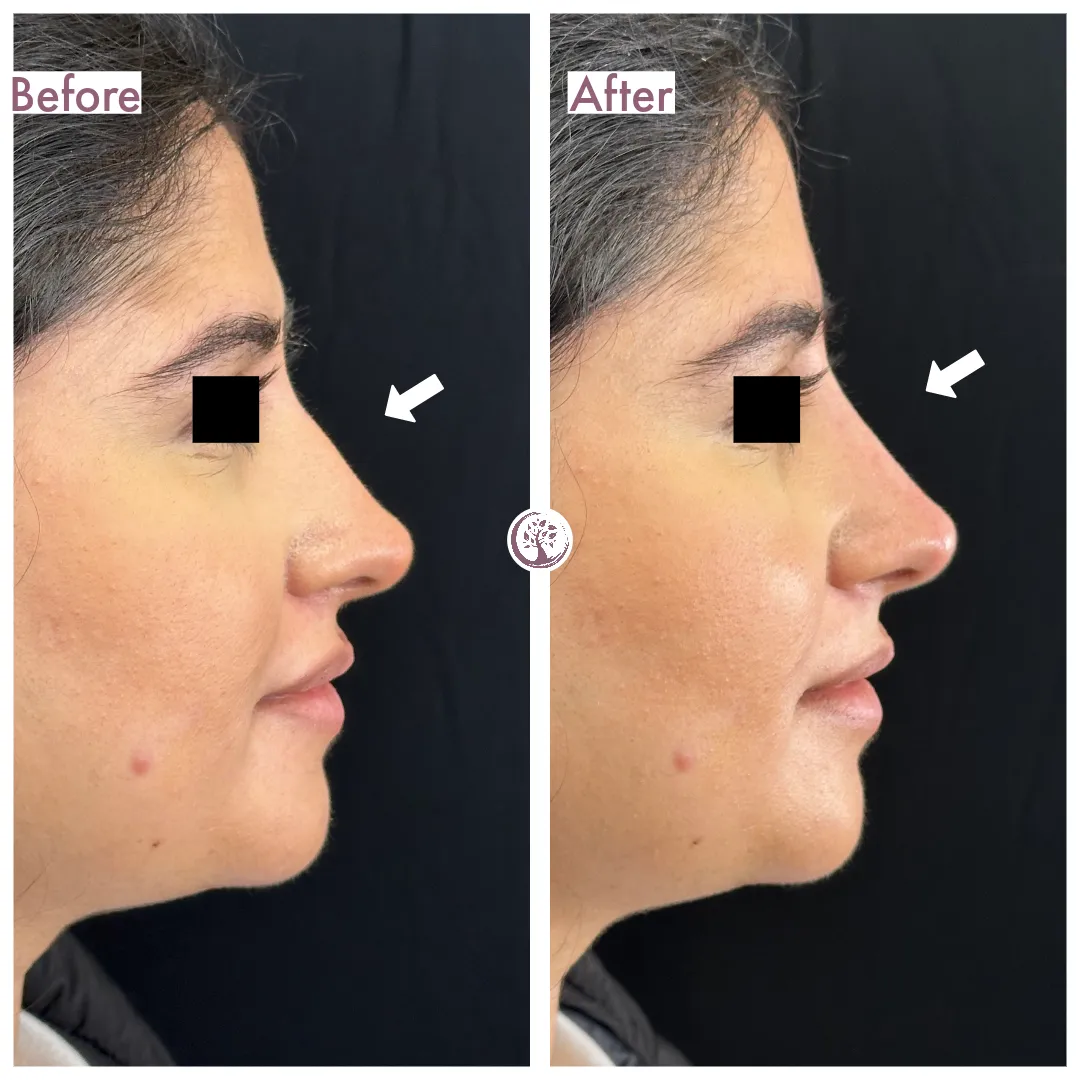
Dermal Filler Treatments
Achieve Full Face Rejuvenation with Ease
£50 OFF
Claim your £50 voucher towards Tear Trough Filler, Non-Surgical Rhinoplasty or any Dermal Filler packages of 3ml+

Dermal Filler Treatments
Achieve Full Face Rejuvenation with Ease
£50 OFF
Claim your £50 voucher towards Tear Trough Filler, Non-Surgical Rhinoplasty or any Dermal Filler packages of 3ml+
The Procedure
The first step will include having an initial consultation with one of our qualified aesthetic doctors. This will involve a conversation about your current health and the look you’re trying to achieve.
Once you’ve decided on the treatment you’d like, the practitioner will carry out the procedure once the steps have been explained to you. Numbing cream can be applied to minimise any pain.
The procedure takes 15 - 20 minutes depending on the area being treated and the look you're trying to achieve. The results can be seen immediately, and the final result can be seen after 10 - 14 days. The results last up to 6 - 12 months.
Once you’ve completed the procedure, you’ll be provided with full aftercare advice. We will ask you to stay in touch and call us if you have any concerns or questions regarding your treatment.
The Procedure
The first step will include having an initial consultation with one of our qualified aesthetic doctors. This will involve a conversation about your current health and the look you’re trying to achieve.
Once you’ve decided on the treatment you’d like, the practitioner will carry out the procedure once the steps have been explained to you. Numbing cream can be applied to minimise any pain.
The procedure takes 15 - 20 minutes depending on the area being treated and the look you're trying to achieve. The results can be seen immediately, and the final result can be seen after 10 - 14 days. The results last up to 6 - 12 months.
Once you’ve completed the procedure, you’ll be provided with full aftercare advice. We will ask you to stay in touch and call us if you have any concerns or questions regarding your treatment.
Before and After Dermal Fillers
Tear Trough Fillers
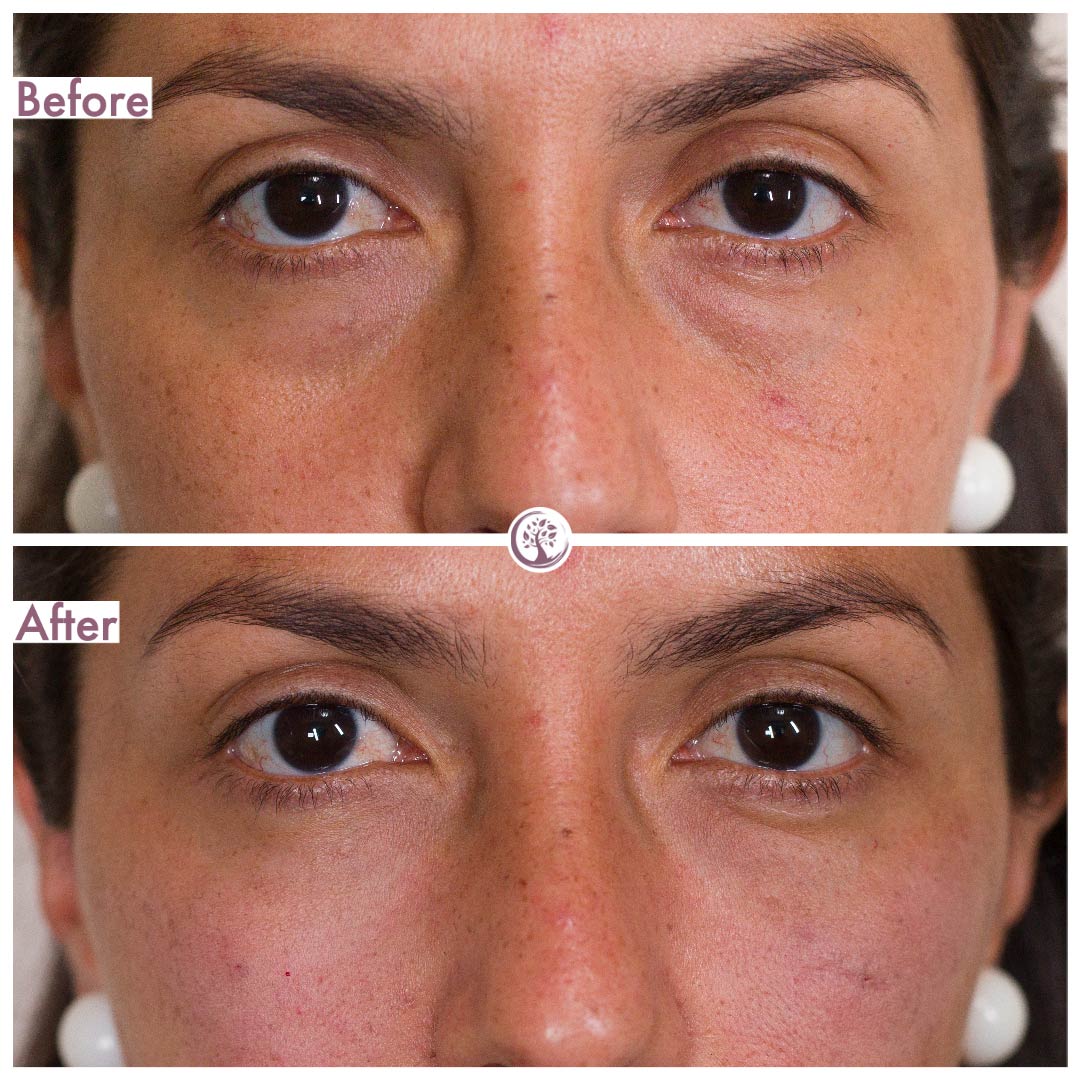
Non-Surgical Rhinoplasty
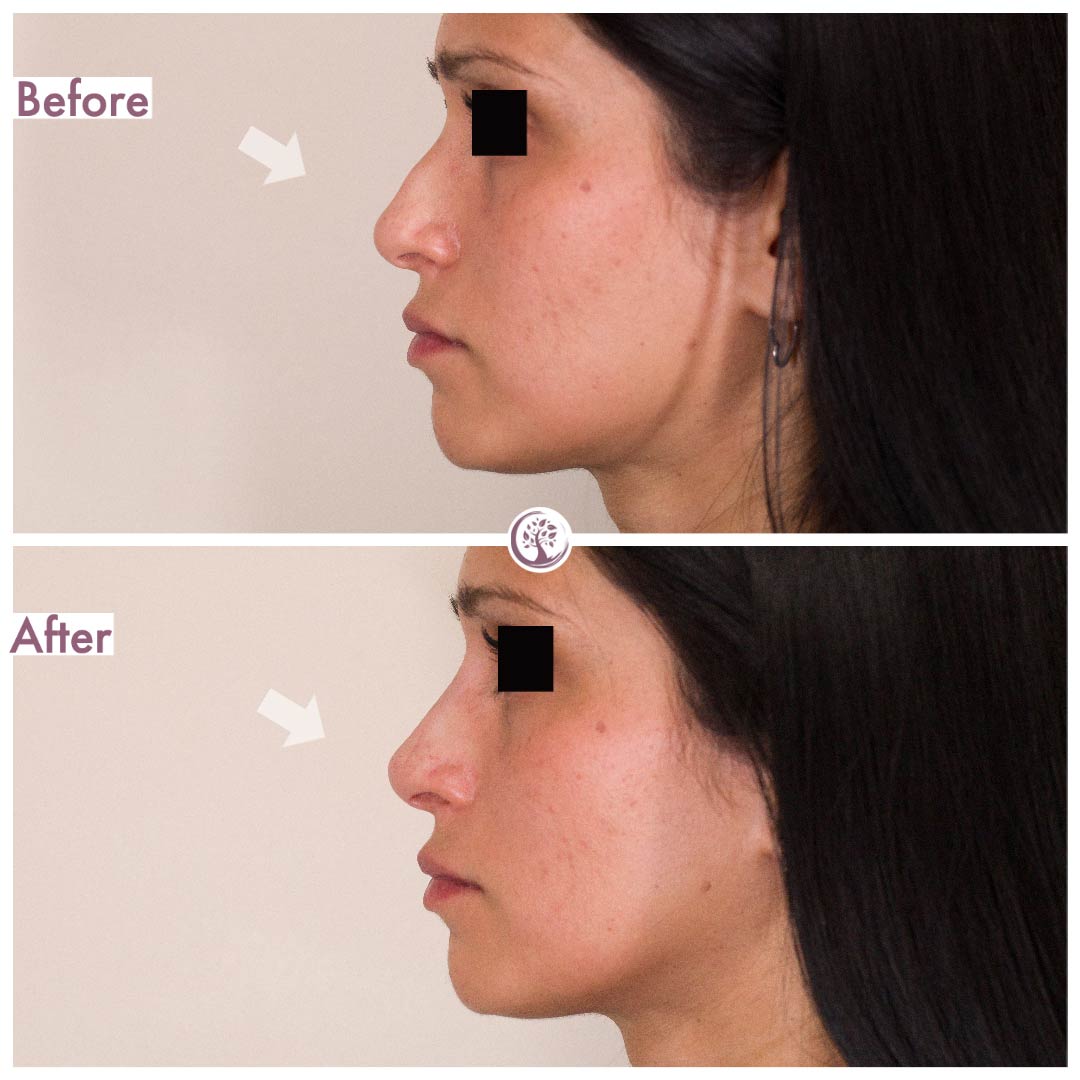
Lip Fillers
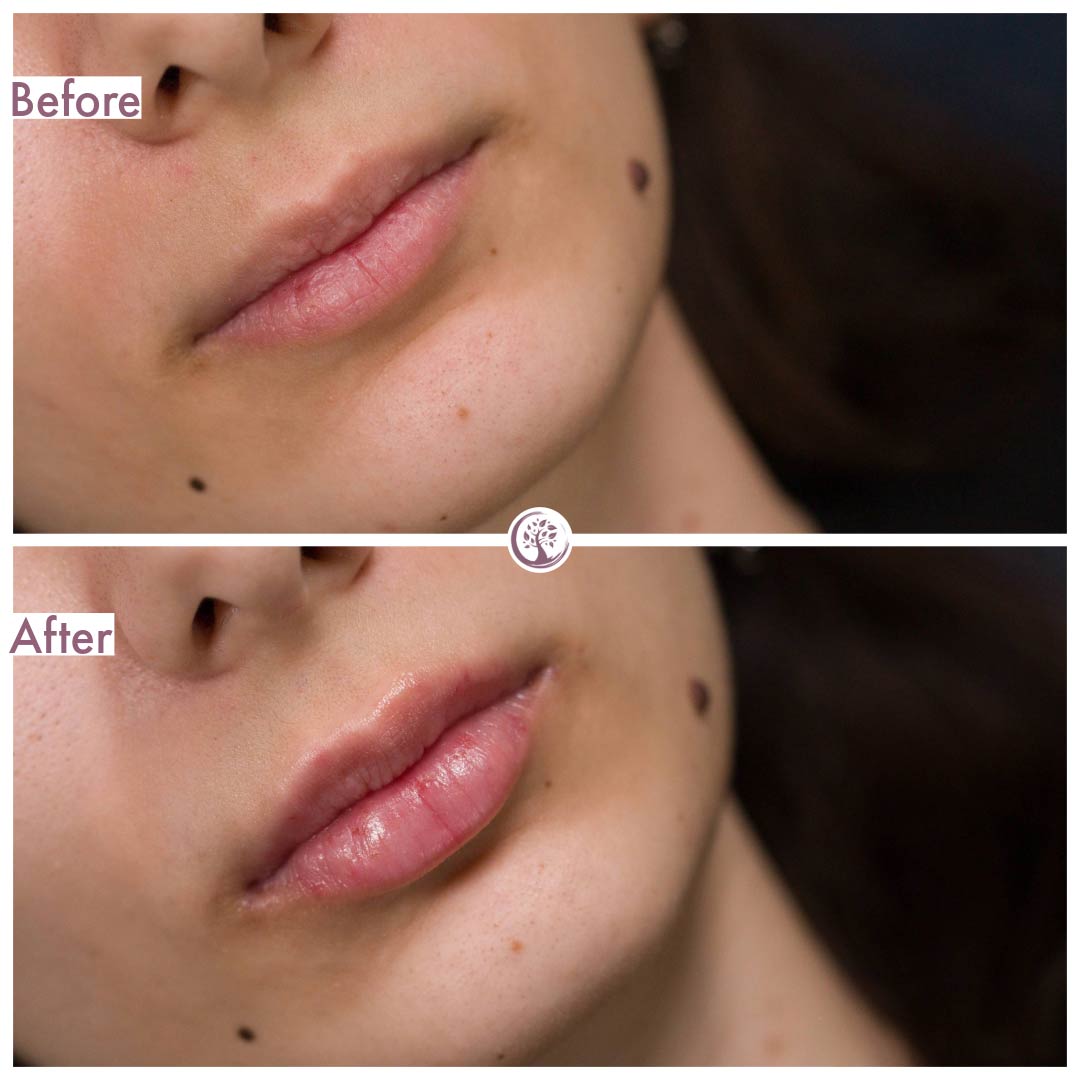
What clients say about us
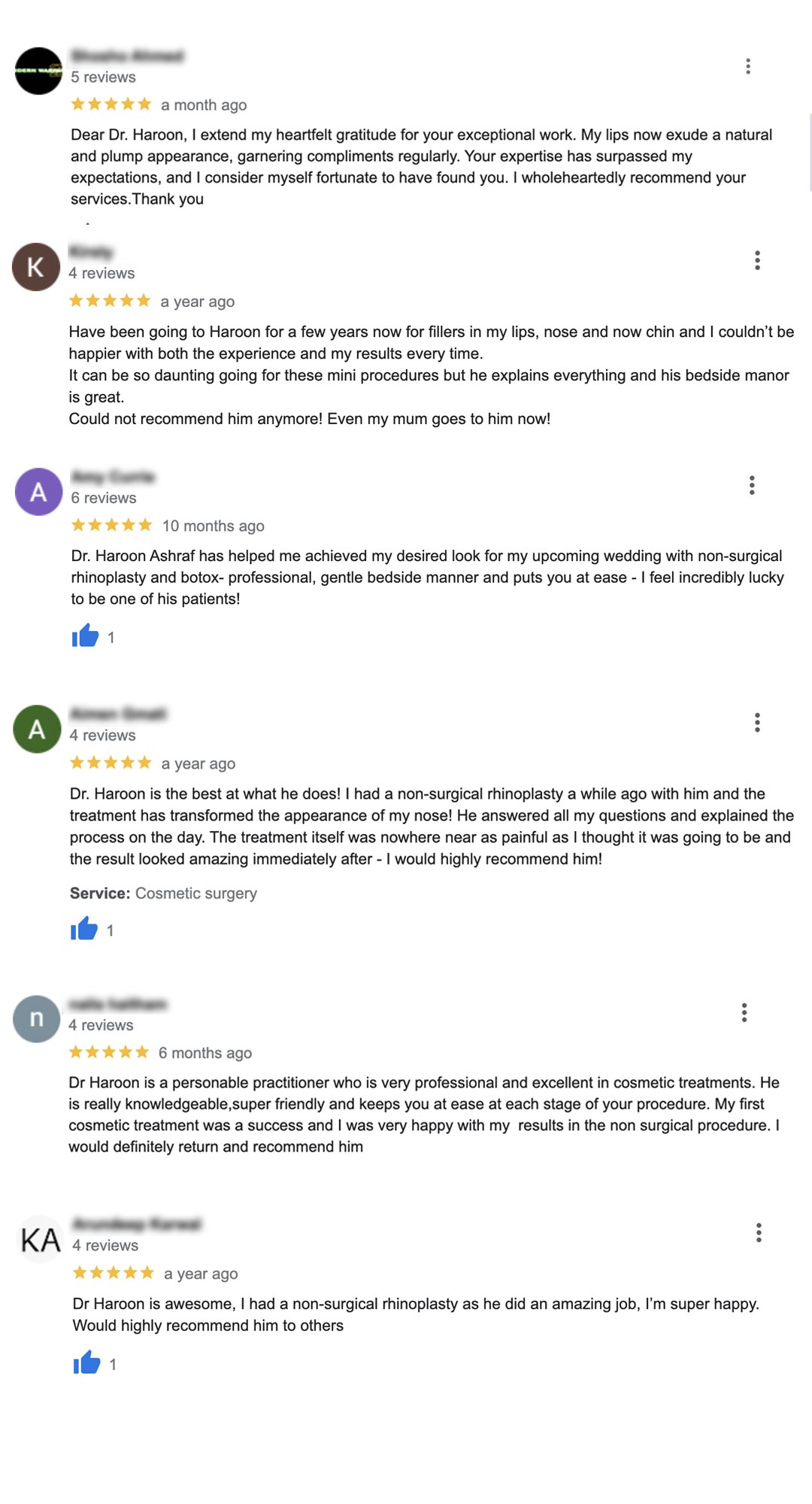
MEET THE DOCTOR

Dr. Haroon is a highly experienced aesthetic doctor who specialises in all advanced dermal filler, skin booster, and Anti-Wrinkle injection treatments.
Having carried out over 6000+ successful aesthetic procedures, Dr Haroon is able to combine the science and art of aesthetic medicine. For his clients, he is able to deliver life-changing results that remain natural and enhance their beauty.
Dr. Haroon is ethical in his approach and works with your desired outcomes to give you the best possible results.
MEET THE DOCTOR
Dr. Haroon is a highly experienced aesthetic doctor who specialises in all advanced dermal filler, skin booster, and Anti-Wrinkle injection treatments.
Having carried out over 6000+ successful aesthetic procedures, Dr Haroon is able to combine the science and art of aesthetic medicine. For his clients, he is able to deliver life-changing results that remain natural and enhance their beauty.
Dr. Haroon is ethical in his approach and works with your desired outcomes to give you the best possible results.

BOOK YOUR DERMAL FILLER
TREATMENT TREATMENT ONLINE
Say Goodbye to lines & wrinkles. Say Hello to confidence & youthfulness.
Don’t think twice, book your free WOW Facial consultation below.
When trusting someone with your face, we cannot stress enough, the importance
of choosing the right practitioner who has your overall health and wellbeing in mind.
BOOK YOUR DERMAL FILLER
TREATMENT TREATMENT ONLINE
Say Goodbye to lines & wrinkles. Say Hello to confidence & youthfulness.
Don’t think twice, book your free WOW Facial consultation below.
When trusting someone with your face, we cannot stress enough, the importance
of choosing the right practitioner who has your overall health and wellbeing in mind.
BOOK YOUR NON SURGICAL RHINOPLASTY ONLINE
Say Goodbye to lines & wrinkles. Say Hello to confidence & youthfulness.
Don’t think twice, book your free dermal filler consultation below.
When trusting someone with your face, we cannot stress enough, the importance
of choosing the right practitioner who has your overall health and wellbeing in mind.
Enjoy expert dermal filler treatments in Redhill, Surrey
Enjoy expert dermal filler treatments in Redhill, Surrey
24 Goodworth Rd,
Redhill RH1 1TE,
United Kingdom
Book An Appointment Now
Lorem Ipsum is simply dummy text of the printing and typesetting industry.
Lorem Ipsum has been the industry's standard
BEST PROFESSIONALS!

Lorem ipsum dolor sit amet, consectetur adipiscing elit. Lorem odio diam, at sociis pharetra, orci volutpat est viverra. Viverra pharetra, pretium, a tellus imperdiet. Nisl non elementum tincidunt mollis neque. Et sagittis purus tincidunt tincidunt
Lorem ipsum dolor sit amet, consectetur adipiscing elit. Lorem odio diam, at sociis pharetra, orci volutpat est viverra. Viverra pharetra, pretium, a tellus imperdiet. Nisl non elementum tincidunt mollis neque. Et sagittis purus tincidunt tincidunt
Frequently Asked Questions
Let us answer some of the questions you may have below.
WHAT ARE DERMAL FILLERS?
Dermal fillers are non-surgical injectable gels made from hyaluronic acid, a naturally occurring substance in our skin.
This injectable gel can be used for a number of different cosmetic purposes including replacing lost volume in the cheeks, adding volume and contour to the lips, enhancing the appearance of the nose, sharpening the appearance of the jawline and chin and much more.
Dermal fillers are not to be confused with with well known treatments, which relaxes muscles to help soften lines and wrinkles.
Dermal fillers are a safe and effective cosmetic treatment that can achieve surgical like results, without the need to go under the knife.
WHAT HAPPENS AT A DERMAL FILLER CONSULTATION?
We believe that every cosmetic journey starts with a thorough consultation. Dr Haroon is a highly skilled aesthetic practitioner, during the consultation he will aim to understand your main concerns and learn what your desired outcomes are.
He will also give advice regarding what the best treatment plan is to help you achieve your goals and to help you look your best. His primary goal is to ensure that after the consultation you are fully informed about the treatment options, what the treatment itself entails, whether you’re suitable for the proposed treatment and that all your questions or concerns have been addressed.
Following the consultation, you can opt to proceed with the treatment on the same day. However, there is no obligation, and if you prefer to take some time to consider it, that's perfectly fine as well.
WHAT HAPPENS DURING A DERMAL FILLER TREATMENT
Before undergoing any dermal filler treatment, we will apply a strong topical anaesthetic to numb the skin's surface. Following this, the designated area will be thoroughly cleansed before any dermal filler injections take place. The procedure utilises a fine needle or a cosmetic cannula for precise application. In most cases, the results become noticeable right away. While some individuals may experience minor swelling and bruising on the treatment day, these effects typically subside within the first few days.
ARE DERMAL FILLERS SAFE?
Generally speaking, dermal fillers are safe and effective cosmetic treatments. However, these treatments are medical treatments and there are some potential risks that you should be aware of. In order to minimise these risks from occurring it’s important that these treatments are carried out by doctors or other medical professionals. This will ensure that your practitioner can minimise the chances of complications occurring and if they were to occur, they have the knowledge and skills to recognise and rectify any issues.
There is a small chance that dermal filler can block a blood vessel, this will lead to lack of blood flow to an area of the skin. If this were to happen, a dissolving agent will be used to dissolve the dermal filler and allow the blood to flow to the skin normally. The chances of this occurring is roughly 1 in 10,000 and doctors are trained to recognise the signs and symptoms of a blocked blood vessel so that they can treat this quickly and effectively.
There is a small chance of a superficial skin infection. This can be minimised by using sterile needles and cleaning the skin thoroughly, before and after treatment. The patient is also advised to not touch the area and not to apply make-up for 4 hours post treatment to help minimise the chance of this occurring. If this were to occur, antibiotics can be prescribed to treat this. The chances of this occurring is roughly 1 in 15,000.
DO DERMAL FILLERS HURT?
Most patients report a mild pinch when the needle or cosmetic cannula is being inserted. However, this pain can be minimised by using strong topical anaesthetic to numb the top layer of the skin. The dermal fillers that we use also contain anaesthetic, so as we start to inject the gel under the skin, the area becomes more and more numb. Most patients describe the treatment as very tolerable and are pleasantly surprised with the way the treatment feels.
HOW LONG DOES THE DERMAL FILLER TREATMENT LAST?
The longevity of dermal filler vary from person to person depending on their individual metabolism. The cosmetic effects typically last anywhere between 12-18 months and will usually last longer with each future session. It is advised to come back and have a review after 12 months and the doctor can advise whether a repeat treatment is required to maintain results or whether you can wait another 6-12 months before doing so.
IS THERE ANY DOWNTIME WITH DERMAL FILLERS?
You will be able to observe an immediate result with the use of dermal fillers, however due to the nature of the treatment there may be some redness and mild swelling in the area of treatment. This usually beings to resolve over the next few days and can be covered with make-up 4 hours post treatment. The swelling is mild enough that most people are happy to go back to work on the same day of the treatment.
The final result will be at 2-weeks once any mild swelling has resolve and once all the dermal filler has integrated and settled. The result will generally look good during the first 2-weeks but will typically look it’s best at the 2-week mark.
Regarding after-care, we advise that you avoid touching the area and applying make-up in the first 4-hours post treatment. We also advise that you avoid any strenuous exercise and excessive pressure to the area of treatment for the first 48-hours following treatment.
WHAT ARE THE SIDE EFFECTS OF DERMAL FILLERS?
Common side effects following all dermal filler treatments include mild redness and mild swelling in the area of treatment. Occasionally you can experience pin prick bruising at the site of the injections. These side-effects are usually mild and tend to resolve in the first few days following treatment.
There is a small chance that dermal filler can block a blood vessel, this will lead to lack of blood flow to an area of the skin. If this were to happen, a dissolving agent will be used to dissolve the dermal filler and allow the blood to flow to the skin normally. The chances of this occurring is roughly 1 in 10,000 and doctors are trained to recognise the signs and symptoms of a blocked blood vessel so that they can treat this quickly and effectively.
There is a small chance of a superficial skin infection. This can be minimised by using sterile needles and cleaning the skin thoroughly, before and after treatment. The patient is also advised to not touch the area and not to apply make-up for 4 hours post treatment to help minimise the chance of this occurring. If this were to occur, antibiotics can be prescribed to treat this. The chances of this occurring is roughly 1 in 15,000.
CAN ANYONE RECEIVE DERMAL FILLERS?
Generally speaking, anyone over the age of 18 can receive dermal fillers. However, the most important point to consider is whether you are suitable for the proposed treatment and whether you are going to achieve an objectively desirable result. An experience cosmetic doctor will be able to help you decipher what treatments will be best suited to you and whether you’re suitable for these proposed treatments.
Patients should be aware that most dermal fillers contain lidocaine, which is an anaesthetic. If you are allergic to lidocaine the practitioner should be made aware so that dermal fillers that do not contain lidocaine are used and alternative pain minimising techniques can be implemented (ice, vibration etc.).
WILL DERMAL FILLERS DRASTICALLY CHANGE MY FACE?
Although some dermal filler treatments can be more impactful than others, the goal is always to ensure that the end result is as natural as possible. The goal is never to drastically change the way you look but it’s to work with what you already have and aim to make you look like the best version of yourself. The end result should be noticeable but should remain within the realm of natural.
Each patient has their own individual facial features and everyones goals and ideal outcomes may be slightly different. Our aim is to work with your individual anatomy and desired outcomes to ensure that you are looking like your best self.
CAN I SLEEP ON THE PART OF MY FACE WHERE I GOT DERMAL FILLERS?
It is advised that you avoid any excessive pressure in any area that you’ve had dermal filler treatment for the first 48-hours. The best position to sleep in following treatment is flat on your back, however sleeping on your side is okay also. Try avoid sleeping directly with your face flat in the pillow or with your hand/arm resting against your face.
CAN I WASH MY FACE NORMALLY AFTER RECEIVING DERMAL FILLERS?
Yes, after 4-hours you can wash your face with gentle pressure and warm water. You can also continue your normal skin care routine ensuring you apply only gentle pressure to the treated areas for the first 48-hours following treatment.
WHAT ARE THE BENEFITS OF DERMAL FILLERS?
Dermal fillers can be used in a number of different ways to achieve desirable cosmetic results. As long as the treatments are done correctly, the results can be impactful yet remain looking natural.
Dermal fillers can help replace lost volume in the cheeks, lips and temples. They can minimise the appearance of smile lines and marionette lines. They can be used artistically in the nose to help lift the tip of the nose, camouflage any bumps and give the appearance of a slimmer nose. The can be used in the chin to help balance a side profile and give the chin a more narrow and feminine appearance. They can be used in the jawline to contour and minis the appearance of jowls. They can also be used in the under-eye area to improve the appearance of dark circles or under-eye hollows. These are just some popular examples of how dermal fillers can be used to enhance an individuals natural beauty.
Dermal fillers are comprised of hyaluronic acid, which is natural occurring in the skin. The secondary benefit of dermal fillers include hydration and collagen stimulation in the areas of treatment. As long as they are carried out appropriately, dermal fillers can have long term anti-aging benefits.
HOW MUCH DO DERMAL FILLERS COST?
The cost of dermal filler treatments can vary depending on a few factors including the type and brand of dermal filler being used, the area being treated, the skill and experience of the practitioner and how much dermal filler will be required to achieve the desired results.
In our clinic we aim to use the highest quality products that have been tried and tested over the years. We used the most trusted brands available that are market leaders and are constantly striving to produce higher quality, safer and longer lasting products. These suppliers have been around for over 20+ years and have stood the test of time.
Certain treatments require more skill and training in order to achieve results safely and effectively. These treatments can include non-surgical rhinoplasty, tear trough filler and temple filler. These may be priced slightly higher than other treatments due to them requiring a higher level of skill and more training.
Dr. Haroon has spent years mastering the art of facial aesthetics. He has successfully carried out over 6000+ non-surgical aesthetic treatments across the UK and is a renowned clinical trainer at Derma Medical, an international aesthetics training provider. He has spent thousands of hours attending seminars and courses, learning facial anatomy and injectable techniques to ensure he is always up to date and to make sure that he can deliver the best results in the safest way possible. Generally speaking, practitioners with more experience may charge more in order to reflect the time, money and effort they have put into mastering their craft over the years.
Frequently Asked Questions
Let us answer some of the questions you may have below.
WHAT ARE DERMAL FILLERS?
Dermal fillers are non-surgical injectable gels made from hyaluronic acid, a naturally occurring substance in our skin.
This injectable gel can be used for a number of different cosmetic purposes including replacing lost volume in the cheeks, adding volume and contour to the lips, enhancing the appearance of the nose, sharpening the appearance of the jawline and chin and much more.
Dermal fillers are not to be confused with well known treatments which relaxes muscles to help soften lines and wrinkles.
Dermal fillers are a safe and effective cosmetic treatment that can achieve surgical like results, without the need to go under the knife.
WHAT HAPPENS AT A DERMAL FILLER CONSULTATION?
We believe that every cosmetic journey starts with a thorough consultation. Dr Haroon is a highly skilled aesthetic practitioner, during the consultation he will aim to understand your main concerns and learn what your desired outcomes are.
He will also give advice regarding what the best treatment plan is to help you achieve your goals and to help you look your best. His primary goal is to ensure that after the consultation you are fully informed about the treatment options, what the treatment itself entails, whether you’re suitable for the proposed treatment and that all your questions or concerns have been addressed.
Following the consultation, you can opt to proceed with the treatment on the same day. However, there is no obligation, and if you prefer to take some time to consider it, that's perfectly fine as well.
WHAT HAPPENS DURING A DERMAL FILLER TREATMENT
Before undergoing any dermal filler treatment, we will apply a strong topical anaesthetic to numb the skin's surface. Following this, the designated area will be thoroughly cleansed before any dermal filler injections take place. The procedure utilises a fine needle or a cosmetic cannula for precise application. In most cases, the results become noticeable right away. While some individuals may experience minor swelling and bruising on the treatment day, these effects typically subside within the first few days.
ARE DERMAL FILLERS SAFE?
Generally speaking, dermal fillers are safe and effective cosmetic treatments. However, these treatments are medical treatments and there are some potential risks that you should be aware of. In order to minimise these risks from occurring it’s important that these treatments are carried out by doctors or other medical professionals. This will ensure that your practitioner can minimise the chances of complications occurring and if they were to occur, they have the knowledge and skills to recognise and rectify any issues.
There is a small chance that dermal filler can block a blood vessel, this will lead to lack of blood flow to an area of the skin. If this were to happen, a dissolving agent will be used to dissolve the dermal filler and allow the blood to flow to the skin normally. The chances of this occurring is roughly 1 in 10,000 and doctors are trained to recognise the signs and symptoms of a blocked blood vessel so that they can treat this quickly and effectively.
There is a small chance of a superficial skin infection. This can be minimised by using sterile needles and cleaning the skin thoroughly, before and after treatment. The patient is also advised to not touch the area and not to apply make-up for 4 hours post treatment to help minimise the chance of this occurring. If this were to occur, antibiotics can be prescribed to treat this. The chances of this occurring is roughly 1 in 15,000.
DO DERMAL FILLERS HURT?
Most patients report a mild pinch when the needle or cosmetic cannula is being inserted. However, this pain can be minimised by using strong topical anaesthetic to numb the top layer of the skin. The dermal fillers that we use also contain anaesthetic, so as we start to inject the gel under the skin, the area becomes more and more numb. Most patients describe the treatment as very tolerable and are pleasantly surprised with the way the treatment feels.
HOW LONG DOES THE DERMAL FILLER TREATMENT LAST?
The longevity of dermal filler vary from person to person depending on their individual metabolism. The cosmetic effects typically last anywhere between 12-18 months and will usually last longer with each future session. It is advised to come back and have a review after 12 months and the doctor can advise whether a repeat treatment is required to maintain results or whether you can wait another 6-12 months before doing so.
IS THERE ANY DOWNTIME WITH DERMAL FILLERS?
You will be able to observe an immediate result with the use of dermal fillers, however due to the nature of the treatment there may be some redness and mild swelling in the area of treatment. This usually beings to resolve over the next few days and can be covered with make-up 4 hours post treatment. The swelling is mild enough that most people are happy to go back to work on the same day of the treatment.
The final result will be at 2-weeks once any mild swelling has resolve and once all the dermal filler has integrated and settled. The result will generally look good during the first 2-weeks but will typically look it’s best at the 2-week mark.
Regarding after-care, we advise that you avoid touching the area and applying make-up in the first 4-hours post treatment. We also advise that you avoid any strenuous exercise and excessive pressure to the area of treatment for the first 48-hours following treatment.
WHAT ARE THE SIDE EFFECTS OF DERMAL FILLERS?
Common side effects following all dermal filler treatments include mild redness and mild swelling in the area of treatment. Occasionally you can experience pin prick bruising at the site of the injections. These side-effects are usually mild and tend to resolve in the first few days following treatment.
There is a small chance that dermal filler can block a blood vessel, this will lead to lack of blood flow to an area of the skin. If this were to happen, a dissolving agent will be used to dissolve the dermal filler and allow the blood to flow to the skin normally. The chances of this occurring is roughly 1 in 10,000 and doctors are trained to recognise the signs and symptoms of a blocked blood vessel so that they can treat this quickly and effectively.
There is a small chance of a superficial skin infection. This can be minimised by using sterile needles and cleaning the skin thoroughly, before and after treatment. The patient is also advised to not touch the area and not to apply make-up for 4 hours post treatment to help minimise the chance of this occurring. If this were to occur, antibiotics can be prescribed to treat this. The chances of this occurring is roughly 1 in 15,000.
CAN ANYONE RECEIVE DERMAL FILLERS?
Generally speaking, anyone over the age of 18 can receive dermal fillers. However, the most important point to consider is whether you are suitable for the proposed treatment and whether you are going to achieve an objectively desirable result. An experience cosmetic doctor will be able to help you decipher what treatments will be best suited to you and whether you’re suitable for these proposed treatments.
Patients should be aware that most dermal fillers contain lidocaine, which is an anaesthetic. If you are allergic to lidocaine the practitioner should be made aware so that dermal fillers that do not contain lidocaine are used and alternative pain minimising techniques can be implemented (ice, vibration etc.).
WILL DERMAL FILLERS DRASTICALLY CHANGE MY FACE?
Although some dermal filler treatments can be more impactful than others, the goal is always to ensure that the end result is as natural as possible. The goal is never to drastically change the way you look but it’s to work with what you already have and aim to make you look like the best version of yourself. The end result should be noticeable but should remain within the realm of natural.
Each patient has their own individual facial features and everyones goals and ideal outcomes may be slightly different. Our aim is to work with your individual anatomy and desired outcomes to ensure that you are looking like your best self.
CAN I SLEEP ON THE PART OF MY FACE WHERE I GOT DERMAL FILLERS?
It is advised that you avoid any excessive pressure in any area that you’ve had dermal filler treatment for the first 48-hours. The best position to sleep in following treatment is flat on your back, however sleeping on your side is okay also. Try avoid sleeping directly with your face flat in the pillow or with your hand/arm resting against your face.
CAN I WASH MY FACE NORMALLY AFTER RECEIVING DERMAL FILLERS?
Yes, after 4-hours you can wash your face with gentle pressure and warm water. You can also continue your normal skin care routine ensuring you apply only gentle pressure to the treated areas for the first 48-hours following treatment.
WHAT ARE THE BENEFITS OF DERMAL FILLERS?
Dermal fillers can be used in a number of different ways to achieve desirable cosmetic results. As long as the treatments are done correctly, the results can be impactful yet remain looking natural.
Dermal fillers can help replace lost volume in the cheeks, lips and temples. They can minimise the appearance of smile lines and marionette lines. They can be used artistically in the nose to help lift the tip of the nose, camouflage any bumps and give the appearance of a slimmer nose. The can be used in the chin to help balance a side profile and give the chin a more narrow and feminine appearance. They can be used in the jawline to contour and minis the appearance of jowls. They can also be used in the under-eye area to improve the appearance of dark circles or under-eye hollows. These are just some popular examples of how dermal fillers can be used to enhance an individuals natural beauty.
Dermal fillers are comprised of hyaluronic acid, which is natural occurring in the skin. The secondary benefit of dermal fillers include hydration and collagen stimulation in the areas of treatment. As long as they are carried out appropriately, dermal fillers can have long term anti-aging benefits.
HOW MUCH DO DERMAL FILLERS COST?
The cost of dermal filler treatments can vary depending on a few factors including the type and brand of dermal filler being used, the area being treated, the skill and experience of the practitioner and how much dermal filler will be required to achieve the desired results.
In our clinic we aim to use the highest quality products that have been tried and tested over the years. We used brands market leading brands that are constantly striving to produce higher quality, safer and longer lasting products. These suppliers have been around for over 20+ years and have stood the test of time.
Certain treatments require more skill and training in order to achieve results safely and effectively. These treatments can include non-surgical rhinoplasty, tear trough filler and temple filler. These may be priced slightly higher than other treatments due to them requiring a higher level of skill and more training.
Dr. Haroon has spent years mastering the art of facial aesthetics. He has successfully carried out over 6000+ non-surgical aesthetic treatments across the UK and is a renowned clinical trainer at Derma Medical, an international aesthetics training provider. He has spent thousands of hours attending seminars and courses, learning facial anatomy and injectable techniques to ensure he is always up to date and to make sure that he can deliver the best results in the safest way possible. Generally speaking, practitioners with more experience may charge more in order to reflect the time, money and effort they have put into mastering their craft over the years.
What client say about us

Lorem Ipsum is simply dummy text of the printing and typesetting industry. Lorem Ipsum has been the industry's standard dummy text ever since the 1500s, when an unknown printer took a galley of type and scrambled.

Darcel Ballentine
Barone LLC.

Lorem Ipsum is simply dummy text of the printing and typesetting industry. Lorem Ipsum has been the industry's standard dummy text ever since the 1500s, when an unknown printer took a galley of type and scrambled.

Leatrice Handler
Acme Co.

Book An Appointment Now
Lorem Ipsum is simply dummy text of the printing and typesetting industry. Lorem Ipsum has been the industry's standard
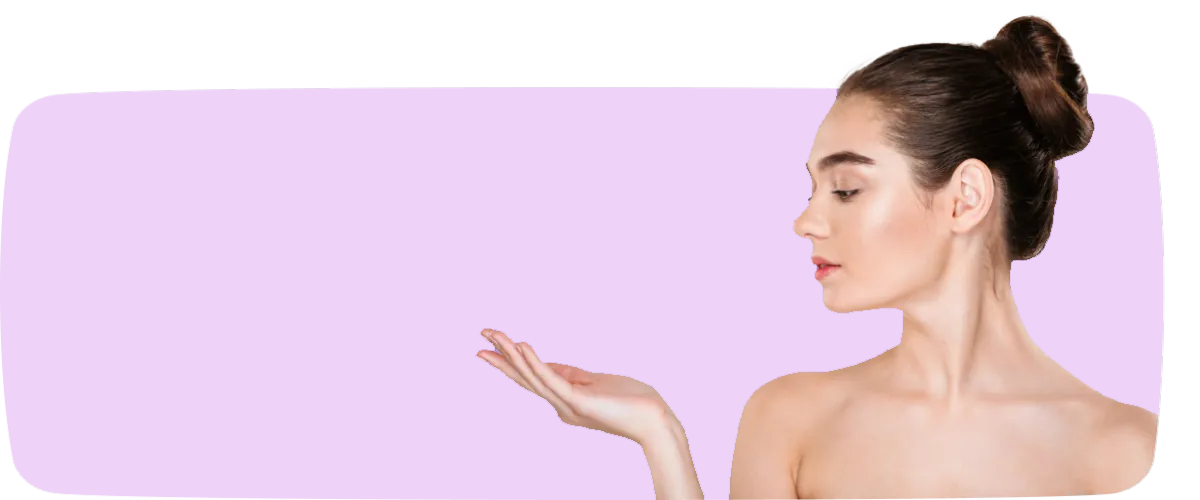

24 Goodworth Rd,
Redhill RH1 1TE,
United Kingdom
©2024 – Mindful Aesthetics | All Right Reserved

24 Goodworth Rd,
Redhill RH1 1TE,
United Kingdom
©2024 – Mindful Aesthetics | All Rights Reserved

Amet minim mollit non deserunt
ullamco est sit aliqua dolor do amet
sint. consequat duis enim velit mollit.
Quick Links
About Us
Services
Contact Us
Social Media Links
Contact Us
(xxx) xxx-xxxx
info@yourcompany.com
Lorem ipsum, XYZ 12345

